The screening of the Good Design Award 2020 was implemented by the "Screening Units", the groups by design category. Here are the review texts by the Units including the trends, features or goals to aim of the category.

-
Designer / Creative Director
- Unit 01 : Life products (Accessories and Wearable)
01-01 Accessories and personal items / 01-02 Clothing / 01-03 Smart watch
The screening evaluation category for unit 1 is “things you wear.” We evaluate products that are closest to us in our daily lives and also physically closest to our bodies, such as clothing, watches, glasses, bags, and shoes. Therefore, many of the products have a long history and have matured. One of the main characteristics of the products is that many of them are designed with more focus on catering to certain tastes than improving their functionality. In general, many products seemed to have a moderate level of technological effort and advancement. As a result, the screening process turned out to be somewhat like listening carefully to quiet voices. Still, I think that the products that passed the screening were the ones that cleverly combined functionality and an ability to suit certain tastes, and had “sympathy” that allowed the users to imagine a new life wearing them.
The most highly rated ones were products made with a keen perspective on matters for which further improvements had not been considered. For example, “JINS SCREEN Nose-Pad Less” (20G010007) is a pair of glasses that has no part touching the face, let alone any nose pads. While nose pads are bothersome to many, I guess they were seen as something you just had to accept, since there did not seem to be any radical solution other than eliminating them. Challenging this problem anew while achieving a beautiful fit at the same time, the design has resonated with many.
“MIENNE” (20G010031) was also rated highly by setting a sharp focus on transparency control. Products such as gym clothes and uniforms are somewhat like infrastructure, as the wearer does not get to choose them, thus they seem to have a great social impact as well. From the perspective of infrastructure-like products, “Magnet Fastener” (20G010030) also received high marks. Even though fasteners are mature products that have already been distributed widely, the way the company’s keen focus on the potential problems and substantial efforts to address them was also highly praised.
I think it points to a continuously questioning attitude.
People firmly hold stereotypes for various products, particularly for everyday essentials. There seems to be a strong tendency that both the creator and the user sides accept problems without even questioning them, even though they are not aware of it themselves. To unearth this issue and reverse it requires considerable imaginative power as well as innovation to embody the solution. This category made me realize once again that this kind of basic approach to design is what makes everyday life more abundant over time.
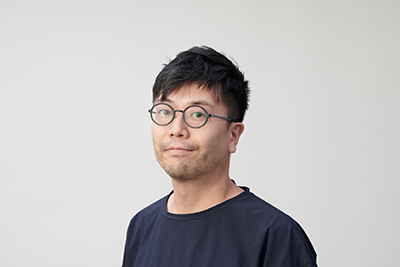
-
Design Innovation
- Unit 02 : Life products (Healthcare)
02-01 Health care items / 02-02 Sanitary goods / 02-03 Beauty care equipment and instrument
The age of thoughtful lifestyle has begun. Thoughtful lifestyle refers to a way of life in which one comes face to face with oneself and reconsiders true abundance.
In summing up this year’s entries for healthcare, products that attempt to satisfy manifest needs stood out, while ones designed to improve the quality of life were scored high marks. Their common denominator is “redefinition of the normal.”
At a time when our conventional values are being challenged at every turn, what is the natural state for us where we feel comfortable? Each entry that was highly rated this year tries to question the “normal,” and has captured and incorporated the first hints of the shift to a thoughtful lifestyle. I would like to explain this through the examples below.
Redefinition of “health.” A condition where one is not healthy, but has not yet developed a disease is referred to as “presymptomatic disease.” Rather than a binary opposition between health and illness, it is about improving one’s lifestyle and habits in between the two, in a way that best suits each individual. “DnaBand” (20G020041) reconsidered what is required for us to stay “normal.”
Redefinition of “walking.” The stay-at-home orders due to COVID-19 have created a deeper appreciation of the benefits of walking. On the other hand, there is also the danger that improper walking methods can cause physical or mental discomfort. “HOCOH” (20G020065) focuses on the sole of the foot, which is the only point of contact between humans and gravity, while “AYURI” (20G020064) explores how walking can help modern people to become naturally beautiful.
Redefining “sustainable”: What is the essence of sustainability? “Olight” (20G020071) shows us the significance of acting in harmony with nature in our daily lives. Its range of products made from biomass plastic is not the only reason it deserves recognition. It has gone completely paperless, and the whole company runs on solar power. Their own actions have brought them into communion with different stakeholders including consumers.
We hope that the domain of healthcare will continue to question the way prosperous and humanistic living should be, and will create a truly comfortable “new normal” in the future.

-
Product Designer
- Unit 03 : Life products (Kids and Stationery)
03-01 Childcare goods and accessories / 03-02 Household childcare items / 03-03 Stationery and office supplies / 03-04 Teaching materials and educational supplies / 03-05 Toys
The screened items of this unit are children’s goods, such as those related to childcare and educational materials, as well as general stationery and office supplies. As is the case every year, many of the products in this category are ones that have entered maturity in terms of technological development, therefore you don’t find dramatic advancement among them. Still, many of them are directly connected to the society we live in, some of which epitomize the steady evolution of existing products, and others demonstrate safety, sound ethical standards or a sustainable manufacturing environment to support the development of children.
Looking at the screened items from this perspective, the aesthetic view of life of each company and designer, and their consideration for users are seen through the products. Seeking ways to evolve and improve things that were conventionally thought to be already satisfactory, and turning them into something that provides the best possible functionality through repeated examinations and verification--efforts like these will powerfully drive improvement of our lives and society. On another front, as the environment surrounding product development has rapidly transitioned from a consumer society to a circular society in recent years, we are happy to note the emergence of products that go beyond the users’ expectations at raising awareness in society. Inventive product design was seen in many projects, such as reducing the number of product parts and simplifying the manufacturing process while seeking better functionality. Compared to the rest of the world, Japan is described as lacking awareness when it comes to efforts to achieve a circular social environment. However, looking at this year's screened items, we feel that there has been a rapid increase in products that reflect the ingenuity and ideas of companies and designers more clearly.
In the ever-changing social environment, the significance of product creation is about to change significantly. Although higher ethical standards for shaping society and the environment are required for companies and designers who develop products related to children and education, we hope to see some light-hearted ideas that can make people smile at the same time. While design is for seeking harmony among interweaving elements and conditions, we would also like it to be simple, intuitive, and a bit of fun.

-
Industrial Designer
- Unit 04 : Life products (Leisure and Hobby)
04-01 Sporting goods / 04-02 Leisure/Outdoor/Travel goods / 04-03 Hobby goods and pet care supplies / 04-04 Accessories for smartphones, personal computers and cameras / 04-05 Garden tools / 04-06 Audio equipment and music instruments
Unit 04 screened items related to leisure and hobbies, which covered various genres including outdoor, sports, travel, fishing, pets, gardening, and audio equipment. Fortunately, each of the Judges had different fields of expertise and various hobbies, and we had frank and thorough discussions while gaining insights from the Judges for other units at the same time.
Since it was an Olympic year as well, sports equipment companies sought to improve their records and created lightweight yet durable products utilizing new materials, which have led to the innovation of new forms. On the other hand, sensor technology and other IT-based products have created smart, scientifically proven training methods, cutting through some out-of-date social issues in the sports world today. Each of them gave a glimpse into the future of sports.
Outdoor equipment was developed utilizing extensive experience of the developers as well as data, showing their aspiration to provide more people with wonderful experiences in nature. Also, among many small, highly-specialized companies, we saw some little-known yet brilliant ones. The endlessly inquisitive spirit and bold ideas of the developers were reflected in the products that have most likely been made with sheer passion for their own enjoyment.
In the area of audio equipment where we received large numbers of applications from Asian countries including China, we saw only a few that showed enthusiasm to cause a stir in the market. In particular, there were many wireless earphones and speakers among the entries, but to be fair, most of them were in the same league. Since this genre has already reached market maturity and is in a technological trough, it even seemed as if the manufacturers were trying to get away with existing technology. We feel that new breakthroughs are required. Under such circumstances, what we found refreshing were digitized Japanese musical instruments, which were an attempt to update the almost-forgotten tradition with technology and design, addressing the culture preservation issue.
Even amid the coronavirus crisis, the field of sports and outdoor equipment is said to be booming. This trend can also be seen in the award-winning items. As the products in this unit can meet demanding conditions of use, the techniques and ideas they developed are often fed back into other products that are intended for daily use. Tents are a good example. The tough, lightweight and practical structure designed for quick setup is applied to construction, while the weather-resistant surface material can be expanded into apparel and disaster prevention products. It can be said that the pursuit of primitive essential elements without pretense is the basis of products. This screening assured us that products in this field would attract more attention in the future.

-
Product Designer
- Unit 05 : Kitchen Tools, Daily Necessities and Cooking Appliances
05-01 Kitchen goods, cookware, tableware and cutlery / 05-02 Daily necessities / 05-03 Cooking appliances
Unit 5 screened essential everyday products, such as kitchen items and daily necessities. 2020 has turned out to be a year of major changes in terms of the ways we work and live. The increased time spent at home has turned our attention from the outside to the inside, and the quality of our daily life has started to be reviewed. While it is not easy to define what quality means in design, it can be described as the capacity to stay beautiful and keep functioning over a long period of time, rather than mere novelty or temporary convenience. Among the entries this year, there were many initiatives for achieving a circular society, which included a number of appealing proposals. Each of them aimed to extend the timescale of design functionality, which seemed to be one of the common characteristics of the entries we gave high marks to this year.
Design proposals prompting users to review the throw-away culture caught our eyes. “Sasasa” (20G050244) uses Japanese bleached cotton cloth that has been updated to suit modern life. It has a charm that transforms the user’s movements into something elegant. “Bio LIMEX Bag” (20G050250) is a meaningful initiative to replace plastic shopping bags with ones made of limestone and bio-based resin. The material has a unique, stone-like texture, giving it many advantages in addition to its environmental efficiency. “Ice Energy” (20G050248), creates a low-temperature environment without the need for any special refrigerator. As a substitute for dry ice that generates a large amount of CO2 when used, it hints at a potential for low-temperature logistics in the future.
I think there is a richness in the relationship between the maker and the user, where carefully made products are cherished and used with care for many years. “Tsuboe’s Finest Grater Box - hako -” (20G050236) and Ogatsu Glass sake cups (20G050221) remind us of this. Ogatsu Glass returns its profits to sustain the local culture of craftsmanship. As the creators dedicate more time to their products, more depth is added to the designs.
The designs that struck a chord with the judges were the ones that looked far ahead with narrowed eyes, while paying scrupulous and meticulous attention to the products in front of them at the same time. Looking at what is in the distance as well as what is in front of you; we believe such forward-looking and painstaking works are behind beautiful products that create “sympathy.”

-
Product Designer
- Unit 06 : Home Furniture and Household Goods
06-01 Home furniture / 06-02 Cleaning goods / 06-03 Household nursing and rehabilitation equipment / 06-04 Emergency supplies / 06-05 Bedclothes / 06-06 Religious supplies
Since there are many mature products in this unit, it is difficult to see clear signs of change among them. However, it seemed that efforts were being made to offer convenience and comfort to suit changing lifestyles.
Chair. We saw some excellent products born from pursuit of the ultimate beauty and comfort, created by a combination of techniques acquired over the years and advanced processing technologies. The trend of seeking the best way of “sitting” from various perspectives, such as that for home learning or the elderly, is set to continue in the future.
Storage furniture / Bed. The trends welcomed in this market seemed to be products that use resources efficiently and blend in to the space, along with expandable ideas in which the purchaser can take part, such as convertible products for utilizing limited space, products that can be mixed and matched, and others that utilize the wall surface to minimize the materials used.
Cleaning supplies. Whereas “clean and simple” is the underlying trend, the products we awarded high marks to reviewed fundamental structure of existing products, bringing innovative changes to usability and achieving a significant reduction in the daily housework burden. Here, we need to find new perspectives on problems that are often overlooked due to changes in our lives, and continue to work on them with a sincere attitude over the long term. We believe that this is what leads to the development of good products In this field.
Disaster prevention products. While the number of special sets has decreased probably because they have secured a foothold in daily life, we saw many proposals featuring advancement in individual products, along with products intended for daily use. Now that disasters are no longer something unthinkable, it is anticipated that disaster prevention products will continue to be more commonplace.
Products for the elderly. Products with greatly improved usability thanks to advanced technology, such as high-performance hearing aids and foldable bath seats were awarded high marks, although looking at the entries overall, few achieved visually beautiful designs. Rather than just focusing on ease of use, it will also be increasingly important to make the products look esthetically appealing in this category, to prepare for the aging society of the future.
Shinto and Buddhist altar fittings. Many of the entries expressed prayer etiquette and the ways of conducting memorial services in various forms, proposing to incorporate them into everyday life to suit individual lifestyles. Efforts to increase opportunities to pray by integrating places to pray into daily life, and to continue the culture of faith consistently are also themes for the future.
Finally, everyday objects that are already highly mature can be matured further by identifying problems in individual lifestyles, and proposing solutions. Conversely, objects that are a little out of the ordinary and rare can propose a new way of life by blending them into daily life. Although each genre is completely different, I keenly felt the evolution into a lifestyle culture.
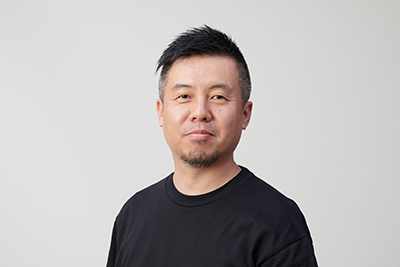
-
Designer
- Unit 07 : Home Appliances
07-01 Home appliances / 07-02 Air conditioning appliances
The subjects of Unit 7 included home appliances and air conditioners. They are produced for more convenient and comfortable human life. However, unlike entertainment goods or articles of taste, many of them are indispensable parts of modern life, and are directly related to our everyday lives.
While everyday lifestyles vary from person to person, creators need to have a good understanding of the users’ lifestyles before coming up with an idea, so that the right market can be found for a product. In screening the products, we examined if they were designed with this understanding. In other words, we tried to pick the products that evoked “sympathy” (the theme of this year's Good Design Award) between the creators and the users.
For example, there were large numbers of automated products among the entries this year. Many products hinted how automation could bring people more free time and improve the quality of their lives.
However, automation is not the only way to achieve “ease of use.” There were some analog products featuring trouble-free operation, setting good examples of “ease of use” different from that afforded by automated products.
In addition to automated products, we awarded high marks to products for which the right position in the market had been identified for them to provide their values to the market.
This year’s screening results of Unit 7 show that products that resonated with the judges and attracted high ratings were made by creators with unique outlooks who strive to create products that they think are genuinely good, rather than just following suit. Products that communicate the creators’ unique ideas through design turn out to be possessed of beauty, quality, good human to device interaction, and originality.
Products that were particularly well received are those that effortlessly convey the creators’ confidence in their products as being good, and at the same time which easily make sense to the users.
The power of “sympathy” leaves few question marks between the creators and the users, and this is probably also a key element that moves people.

-
Design Director / Product Designer
- Unit 08 : Video/Camera Equipment
08-01 Cameras, mobile phones and tablets / 08-02 Video equipment / 08-03 Broadcast and sound equipment for professional use
Ranging from information terminals, cameras, lenses and monitors to software, Unit 8 deals with products mainly related to “taking / viewing.” Many of these products are at the forefront of technology, and since they are touched and operated directly by humans, they need to have the right design that can intervene between the digital and the physical, prevent friction and balance them out neatly.
All in all, the word “tool” as in something perfected seems appropriate for them, and they seem to be approaching the ideal, probably because many of them have been matured over time. The attempts that were rated highly among them were the ones that actualize today’s desired values, or the ones that create the right distance between human and devices.
“Smooth connection between digital and physical”
During the screening process, we had wide-ranging discussions not only about the beauty of the products, but also about sensitivity factors including the tactile texture, heaviness of the buttons and torque, and the UI response, as well as the ideas and solutions behind them. With the ideal size as a professional tool, Digital Cinema Camera (20G080402) has been designed with a focus on quick and reliable operability, while achieving all-in-one functionality to create various video expressions. It can be cited as a good example of the purpose and result connected smoothly and beautifully.
“Abundance ahead”
Products that emphasized their technological superiority were eclipsed even if they were made with advanced technology. Instead, we saw many proposals that went one step further by inspiring the users’ expressiveness and imaginative power. Among them, the 360° small camera (20G080387) has a shape that inspires the users to film on a daily basis, and the small gimbal camera (20G080388) makes the users feel the enjoyment of shooting short video clips, while RAW development software (20G080422) has realized overwhelmingly high-speed processing for pursuing cinematic expression.
“Distance to technology”
Behind the convenience of information devices, social media and Internet addiction are being seen as problems. This communication terminal (20G080385) reduces excess screen time having intentionally narrowed down its functions, so that it can provide a breathing space in daily life. This product gives us an opportunity to stop and think about the pros and cons of continuous evolution and how we should live comfortably.
On the whole, products with little variation gave us a rather tedious impression, while we also noticed that few products demonstrated proactive efforts to reduce their environmental impact, which is almost a requirement now.
In addition to the above, what will be demanded from here on is the ability to listen to the customers and keep progressing in the right direction, as well as insight to read the signs of radically changing times and work out new ways to enrich everyday life. We hope to see the emergence of this kind of innovative spirit at the same time.
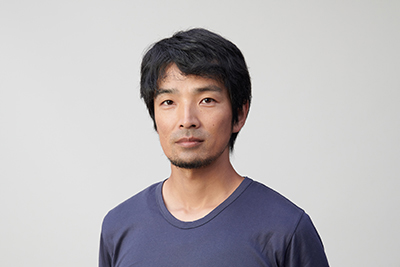
-
Design Engineer
- Unit 09 : ICT Equipment
09-01 ICT equipment for the general public / 09-02 ICT equipment for professional use
As the global pandemic has thrown our daily lives and working styles onto rapid and unprecedented changes, the way we interact with information holds the key to deal with the current situation, and information devices play an important role as the interface. Without a personal computer or the Internet, neither remote work nor online communication is possible. Of course, considering the standard timescale of product development, most of the products entered this year were developed before the coronavirus crisis, so it is a little too much to expect them to have proposals for the post-corona world. Still, going back to each perspective of humanity, industry, society, and timescale, which are listed as the frame of reference for the screening of the Good Design Award, even though the changes are happening ahead of time, the future we should aim for has not changed so much, and involves more diverse work styles and lifestyles, as well as consideration for sustainability.
However, we were made to give extra importance to the timing and balance of changes this year. As stated as the “screening weights” listed in the Tutorial Book for Judges published on our website, it is recommended that the entries be divided into “improved designs based on sufficient track records” and “completely new designs”, and the screening of “improved designs” stresses the appropriateness of the designs, while possibilities for the future should be stressed in screening “completely new designs”. However, there are no clear standards for determining how far we should continue to evaluate when a product is steadily improving and evolving normally , or at what timing we should evaluate the challenge to a completely new model. It is not possible to deal with major changes in the world just by making steady improvements. But then, focusing only on new possibilities that capture the signs of global changes can also lead to a problem where you fail to evaluate sincere design processes that involves listening to the users and making improvements. Also, it is always tricky to strike a balance between “attractiveness” and “correctness” of the design. As seen in efforts for solving social issues such as SDGs, “correctness” is growing in importance year by year. It cannot be criticized, and is often highly regarded. On the other hand, the aspects of “attractiveness” as a product, such as beauty, high quality, and high degree of perfection are also the essential elements of the Good Design Award. There is no perfect balance there. This is something we judges are torn by and debate about all the time, and we expect that the standards will continue to change. Even if a product received recognition this year, it does not guarantee that it will continue to be valued in the future. We hope that all parties involved in design will continue to look into the future from their own perspective, not just based on the evaluations made by others.
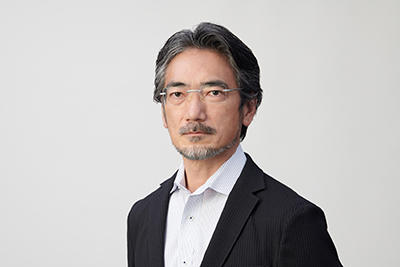
-
Industrial Designer
- Unit 10 : Equipment and Facilities for Manufacturing and Medical Care
10-01 Accessories and personal items for professional use / 10-02 Working tools and instruments / 10-03 Agricultural tools and equipment / 10-04 Equipment and facilities for production and manufacturing / 10-05 Medical equipment and facilities / 10-06 Materials and parts / 10-07 Manufacturing and production technique / 10-08 Equipment and facilities for research and experiment / 10-09 Other product for medical use and manufacturing
Since Unit 10 deals with the category of equipment and facilities for manufacturing and medical care, we received a number of applications related to COVID-19. We would like to express our great respect for all who submitted the entries, which included face shields and PCR testing machines, within a short timeframe to meet the deadline in June. Although we aimed for a speedy process, I would like to stress that the screening was conducted carefully and objectively.
Thinking back, one of the characteristics of this unit was the presence of companies that are developing new high-level businesses. Against a backdrop of technological advances and the shift in consumer needs resulting from social changes, companies can no longer survive in today’s world on the strength of their existing businesses. While it is necessary for companies to develop their business ventures into new domains to sustain business growth, the key to success is how they utilize their strengths to expand into new businesses. This has been demonstrated in the widely-known, successful example of Fujifilm, a regular applicant for this unit in recent years. One of the companies that has developed new business ventures this year is Sony, which has entered into the field of biotechnology. The company has developed a cell analyzer (20G100617) based on the laser spectrum analysis technology that it developed over many years. Meanwhile, Nikon has entered the field of industrial machinery with an actuator for articulated robots (20G100573), which was developed based on its own encoder technology. Casio has made its way into the medical field with an early detection system for skin cancer (20G100614), realized by applying image-processing technology.
Another notable characteristic is the development of integrated services in which hardware and software work in tandem. This allows users to experience a stress-free process of executing desired functions. In Casio's example, from the dedicated camera and rear screen applications to the automatic transfer and viewer applications, both hardware and software have been coordinated seamlessly, and developed into a new service. While control software usually poses an obstacle to introducing hardware, Nikon’s actuators has had it built in, accomplishing an integrated service described as all-in-one.
The two characteristics that we focused on this year have been realized in a common project as a result. From this, we can see the earnest management stance of the companies to capture and resolve social changes and changing needs in a deep and essential way.
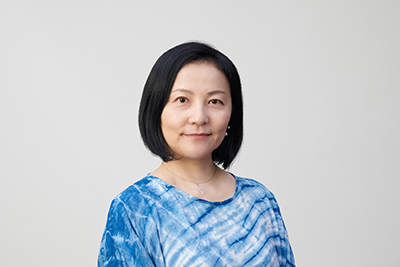
-
Product Designer
- Unit 11 : Housing Fixtures
11-01 House lighting appliances / 11-02 House air conditioning machines/fixtures / 11-03 House building materials/fixtures / 11-04 House interior materials / 11-05 House exterior materials / 11-06 Kitchen fixtures / 11-07 Bathroom and wet area / 11-08 House machines/fixtures
Unit 11 deals with the fields of housing equipment and building materials for making living spaces comfortable and safe. In short, they are controllers for air, light, and water, some of which are hidden in walls, and others can only be appreciated after many years of use. In that sense, we think that performance assessment should be stressed in this field. Still, considering the fact that they physically exist, it is vital for them to be well designed and configured to be considered as Good Designs.
The first of the few points we noted this year is how design could address the inconsistency between how a product looks when it is in use and when it is not in use. Even if the design looks well-proportioned when not in use, it may look ill-proportioned or incomplete when it starts to be used. The beauty of products when they are in use should matter, as that is when the users are actually near them. For instance, an LED light should still look beautiful when it is being charged with a cable connected. And an air conditioner should remain quiet when operating. In the case of a toilet bowl, a neat appearance is desirable, even when the lid is open.
The second point is that many of the building materials used for the exterior and interior walls of houses featured handcrafted-looks. Although the number of mass- manufactured products has increased to cope with shorter construction timeframes due to the shortage of craftsmen, for the past two years we have been seeing products made with some extra touches like aging treatment. The same applies to wood-based materials. There also were some exterior wall materials using sophisticated photo printing technologies. At any rate, it requires a little more creative thinking to create what the users find comfortable.
The third is a breakaway from full-function products. From air conditioners and faucets to toilets, full-function products were commonplace at one point. But now, there are some new products that offer just enough functions. It was good to see designs that accommodated what users prioritize the most, such as a slim and beautiful kitchen faucet with streamlined operation parts, and other miniaturize products that fit well in a building.
While functions to deal with the COVID-19 were seen in a few products, we hope to see ones with a higher level of completion in the future. In addition, as there is a high demand for equipment with a monitoring function, we expect to see products that have solved privacy issues.
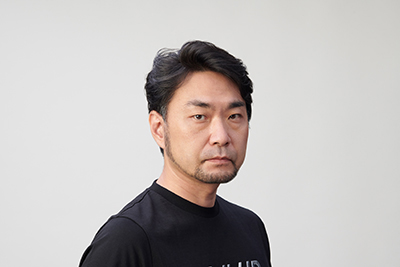
-
Art Director / Designer
- Unit 12 : Equipment and Facilities for Shop, Office and Public Space
12-01 Furniture for shop, office, public space / 12-02 Display furniture for shop and public space / 12-03 Equipment and facilities for public space / 12-04 Kitchen equipment and facilities for professional use / 12-05 Equipment and facilities for professional use / 12-06 Building materials and equipment for commercial space
This year’s overview of Unit 12, which screens office furniture and fixtures, can be divided into two themes that symbolize this day and age.
The first is design for social changes, which could almost be seen as forced by the global spread of COVID-19. The second is product design that manifests the corporate innovation triggered by work style reform.
Needless to say, the theme for the former is design that explores the state of interpersonal communication amid the COVID-19 crisis, and that considers how to deal with the illness in the future, the so-called “with corona” age.
This also relates to “sympathy,” the theme of the Good Design Award this year, but no one knows what the “correct answer” is in the current situation, where the world is still fighting against the virus with little understanding of it.
Therefore, we spent a lot of time in the screening on determining the correctness of the act of “designing.” Regardless of the presence of an ongoing epidemic, what matters most is that design is not just something temporary, but is capable of essential communication and operations, and that the product has sustainable and inherent value. The screening was conducted with particular attention to this point.
In the latter case, we saw an emerging design trend in many initiatives that is likely to attract support from consumers.
For the past two years or so, small and medium-sized enterprises have tended to take advantage of their agility for new product creation, market development, and community building. This year, major firms that were sluggish in the past have started product creation utilizing their assets, with many initiatives aiming to build tangible ecosystems for sustainability. There were so many designs with radical concepts that it seemed as if those long-established companies were finally striking back.
The end products of these initiatives were truly unique, and their free atmosphere seemed to support a more enjoyable working life. I believe that major firms have entered into the field beyond the limit of stagnation, in order to break through the age of VUCA (Volatility, Uncertainty, Complexity, Ambiguity).
This year, the screening venue was different from usual, and the operation of the award office was full of unusual processes. There were a lot of inconveniences that we can learn lessons from, such as the fact that we had to conduct remote hearings with applicants as a measure for infection prevention. In this chaotic environment, I think I myself often had thoughts and hesitations that I never experienced before. At any rate, I would like to pay tribute to the fact that there are so many people who continue to create value through design, even amid such major social changes.
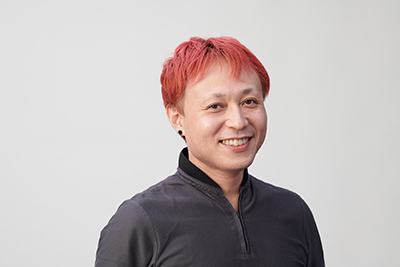
-
Creative Communicator
- Unit 13 : Mobility
13-01 Passenger car, Passenger car-related instruments / 13-02 Commercial vehicle, Commercial vehicle-related instruments / 13-03 Motorbike, Motorbike-related instruments / 13-04 Personal mobility and bicycle, Personal mobility and bicycle-related instruments / 13-05 Railway, Shipping, Aircraft / 13-06 Transportation system and service (logistics / physical distribution)
I feel that this year's screening really questioned the meaning of the word “mobility.” Of course, the reason for this is the global outbreak of the COVID-19 since the beginning of the year. While the “no travel” option has become the norm, it has also prompted each of us to consciously rediscover what it means to travel.
Looking back at the award winning objects in the mobility unit under such circumstances, we can see that a few trends stand out.
Firstly, component parts and underlying technologies that form the basis of logistics, such as automatic conveyors and tires. These things may look insignificant; however, they literally are behind-the-scenes support. As the ratio of online shopping is expected to increase against overall buying behavior, it is likely to become increasingly important.
Next, initiatives aiming to solve social issues, which reflect one of the major trends in recent years. With the meaning of the word “mobility” becoming broader, we have been seeing an increase in the number of proposals for transportation systems as well as hardware. New endeavors this year included a mobile protective vehicle for highways that was developed in the wake of a worker’s fatal accident, and deep sea tuna fishing boats utilizing the power of design to attract workers to the fishery industry, which is currently facing a labor shortage.
Perhaps because of the current situation, we saw many entries intending to remind people of the fun of traveling. Some automobiles and railway vehicles attempted to achieve this goal with the appeal of hardware alone, while there was a proposal for a passenger ship that aims to combine the fun of travel and regional revitalization through tourism, where hardware and a cross-company joint effort were integrated.
Another entry proposed mobility intended to be more than a tool for mobility, but also a companion for people. We would like to focus our attention on the future of proposals that address head-on with the potential effects of travel on people.
It has been proclaimed for a long time that mobility is in the midst of a once-in-a-century transformation period. Many of the award winning objects this year seemed to be searching for solutions with the next generation in mind, and I think a lot of them had found their way to realistic solutions, even if each step was a small one.
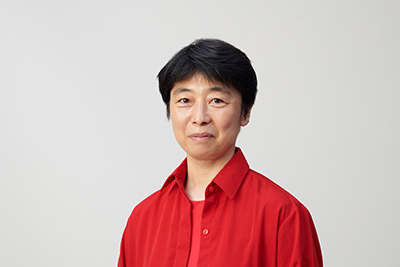
-
Architect
- Unit 14 : Housing (Personal Residence, Small Sized Apartment)
14-01 Commercial/industrialized housing / 14-02 Detached house / 14-03 Cohousing / 14-04 Small sized housing complex / 14-05 Construction method for housing / 14-06 Service and system for detached and small-sized housing /HEMS(Home Energy Management System)
Unit 14 is for detached housing and small sized apartments. The wide-ranging applications included housing by house builders, ones designed and constructed by building contractors, and others designed by architect offices, as well as small sized apartments such as rental housing, elderly housing and student dormitories, overseas housing, and even housing materials. Our general impression of the screening this year was that the overall level was rising. From the applicant’s recognition of the current state of housing, to their ability to review and critique, to their ability to make proposals, the bar has been raised in terms of the qualities required for the Good Design Award. As a consequence, even if an entry reached a certain level that would have earned an award in the past, we thought that extra depth was required now. At the same time, we became keenly aware that the level of demand and expectation for design is steadily increasing in society. We screened each of the entries with a constant awareness of whether it showed any forward-thinking proposal for improving society, going beyond the framework of the housing construction industry.
Among them, “Yo no Ie” (20G140858) by MUJI HOUSE, the international student dormitory for Kanagawa University (20G140911), and Taishido Housing Complex (20G140921) in Iitate village, Fukushima, were chosen in the Best 100. “Yo no Ie” has been developed as a single-story version of the MUJI house. We recognized how it realized a comfortable house that could be used as a villa as well, at a low price. With outdoor life being embraced again these days due to the impact of the COVID-19, it seems as if this proposal was made in anticipation of times like these. The international student dormitory of Kanagawa University is a student dormitory with a charming communal area that is like a town. The little space called Pot, which protrudes into the communal atrium, is varied in style and looks attractive. We admired the clever spatial composition that encourages students to interact, as it seems more fun to be in the Pot than staying in their small bedrooms. Taishido Housing Complex is a public housing development rebuilt from the temporary housing originally built after the Great East Japan Earthquake, which was dismantled and relocated. The original temporary housing was planned in anticipation of being rebuilt afterwards, and was constructed in a log house style. After it was dismantled and relocated, necessary modifications such as heat insulation were made before it was completed as a new housing complex. Reusing temporary housing that would usually be demolished and discarded has great social significance.
Although each of these works differs in its use and purpose, they are all especially worthy of attention as potential models of places to live in the future society.

-
Architect
- Unit 15 : Housing (Medium to Large Sized Housing Complex)
15-01 Medium/large sized housing complex / 15-02 Service and system for housing complex/HEMS(Home Energy Management System)
Looking at the entries this year, the overall level of design has increased. While many entries featured sophisticated facades as well as planning, there were not a lot of works that gave a strong, innovative impression. Among them, a clear intention was expressed in each of the works that won the Good Design Award. In particular, “FLATS WOODS Kiba” (20G150955), a company dormitory that was selected in the Best 100, has more to offer than the novelty of a high-rise building made of wood. It is a project that explores the potential of lumber as one of the natural resources of Japan, involving the process from lumber procurement to development of fireproof wooden structural materials to construction, with help from forest landowners, trading companies and lumber mills. Its elegant appearance conveys with it a powerful message for a circular society. Another project that looks totally different from this on the face of it is “Yukai full” (floor air conditioning system for apartment dwelling units) (20G150996).
The underfloor air conditioning was achieved using a combination of existing products, after eliminating the standard wall-mounted air conditioners that are usually installed in dwelling units. It not only provides a consistent and comfortable temperature in the dwelling unit, but also saves energy. It is another initiative contributing to a circular society, but more notably, it shows the basic stance that creation starts from questioning the ordinary that is buried in everyday life.
In addition to the circular society, another keyword is locality. As the coronavirus crisis has changed people's lifestyles and especially because remote work has become commonplace, the role of housing has changed too, and I think that apartments have been given a new mission now. From the floor plan for the dwelling units to how they are connected to the communal space and the outside, it made us realize how the designs of the housing where we spend most of our daily lives and its surroundings are directly linked to the richness of our lives. And I believe that the key to create this richness is to have a full understanding of that particular place, and interpret the locality spatially. Among the entries this year, we saw designs that took advantage of their locations and utilized the ground floor to showcase regional characteristics, such as a pathway from the front yard to the spacious dwelling units, and a refreshing courtyard where residents gather. I think it was a great result that we discovered works showing the direction of locality design in future apartments.
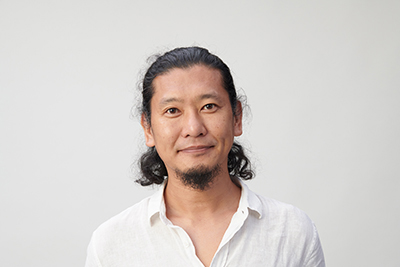
-
Architect, Professor
- Unit 16 : Construction/Interior Design for Industry and Commercial Facility
16-01 Construction/space design for industry / 16-02 Construction/space design for commercial use
The subject of Unit 16 was commercial and industrial construction. These are a group of buildings called commercial buildings, i.e. profit facilities, a field that has not always been received well in the world of academic architecture, despite the significance of their presence in cities. This is because this category of building has historically been constructed with little consideration for the cityscape or local community, but has instead undermined and harmed them, as its highest priority is to make as much profit as possible. This being my first time participating in the screening of this unit, I was a little worried about being faced with a parade of ego-driven “clever money collection facilities.” However, I was pleasantly surprised by the actual items we screened.
An example of the most conventional commercial facilities is the large, box-shaped shopping mall. Designed so that commercial activity was completed within it, it was almost completely closed off from the city, and far from contributing to the cityscape or liveliness of the city, it seemed to strangle the surrounding urban space with its massive presence. Just like slash-and-burn agriculture, this kind of commercial activity has devastated cities nationwide in exchange for temporary profits. This time, however, we saw only a handful of conventional projects of this kind, and instead, there seemed to be many entries that sought to open up to the cities and actively contribute to the liveliness of urban spaces and improvement of the landscape. Rather than an egoistic stance of trying to maximize their own profits only, the idea here is to attract more people by improving the surrounding environment, which would result in an increase in their own earnings. It is the evolution of commerce from slash-and-burn style temporary profit seeking to sustainable profit management, and could be called the maturation of the nation’s commerce.
A shift from temporary and self-serving commerce to diachronic and altruistic commerce. I believe that the overall trend this year was appropriate for this year’s theme: “sympathy.”

-
Researcher in Urbanism
- Unit 17 : Public Facility, Civil Structure and Landscape
17-01 Construction/space design for public facility / 17-02 Landscape, civil engineering structures / 17-03 Block and community development / 17-04 Construction method for industry, commercial, public facility
This year, public facilities, civil engineering, and landscapes became an independent unit, having separated from industrial and commercial buildings. In our lives, we spend a lot of time in public spaces, and there are many different ways of passing the time there. While this unit screens a wide range of subjects from interior design, architecture, districts, and infrastructure, it was interesting to see some works whose design effects transcended multiple subjects rather than covering just a single one. In addition to designs for physical space, many applications featured comprehensive designs including planning processes, participation and management systems, and financing and branding, which showed that designs combining so-called hard and soft have become the standard.
One of the noticeable points this year is that there were a number of excellent preservation and renovation works. Rather than just restoring or creating neat-looking spaces, variations were seen in the entries in terms of historical interpretation and the meaning of the building as modern architecture. While the importance of preservation and renovation has been stressed for a long time in Japan, which has been stuck in a cycle of “scrap and build,” it seems that the approaches and methods for such efforts are now maturing. To generalize a little, it can be seen as temporal design incorporated into spatial design, from makeshift or temporary spaces to preservation and renovation, and to challenges in reconstructing the environment or communities or in creating new value and connecting it to the future, in the face of intensifying natural disasters.
As the number of entries from abroad is on the increase, we came across some designs that looked good visually, but it was sometimes hard to evaluate them when their regional context was not clear enough. We hope this insight will be of help to those who are applying for the award from next year onward.
The COVID-19 pandemic has made it a common understanding that gathering, meeting and interacting with others are risky. At the same time, the recognition that ICT (Information and Communications Technology) can replace a considerable part of social interaction has spread rapidly. At times like these, what is the implication of public real-space? To make you feel your own physical existence amid an expanding, diversifying society, and in the flow of time from the past to the future. To protect you physically as well as protecting your everyday life from various risks, and to bring you rich daily life experience. These properties can be found in this year’s entries. Proposals for spaces incorporating new technologies like ICT are also expected to increase in the future. I imagine that the meaning of real-space in society will shine out in an environment like that.
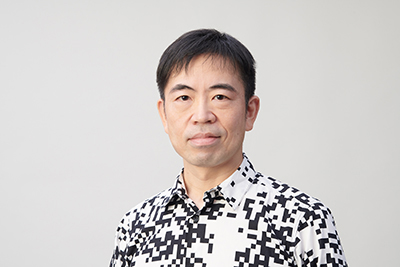
-
Creative Director
- Unit 18 : Media, Contents and Packaging
18-01 Media / 18-02 Contents for the general public / 18-03 Contents for business / 18-04 Method for advertising/PR / 18-05 Exhibition / display / 18-06 Branding / CI / VI / 18-07 Font / 18-08 Packaging for the general public / 18-09 Packaging for professional use
This unit evaluates a wide variety of designs from product packaging and exhibitions, to TV shows and advertising, to branding activities and fonts, to mobile applications. Since they have less “functionality” than physical products or architecture, the interesting thing about them is that their value changes greatly depending on the kind of relations they have with the people and society of that time.
To give an example, it used to be crucial for packaging to look eye-catching on the shelves in stores, but now that we are in an era where we cannot always expect to randomly spot a product at the store and buy it, what matters more is whether a product is serving as an “intermediary device” for users to fully understand the brand's identity. For instance, “Baum” (20G181148), packaging for skincare products, evokes a sense of affinity with wood grains that are different from one another, as well as conveying the significance of coexistence with trees through the tree planting projects, whereas “Gift Pocky” (20G181153), a snack, has become a tool of brand communication amid the culture of social media, inspiring people to give it to others to make them smile.
In addition, the spread of technology has added new dimensions to designs that create “relationships with people and society.” Not only expressions on paper or screen or a product’s shape, many other aspects of a product serve as relationship-creating devices, which means that detailed interaction and sound design are also important. For example, “Earthquake Early Warning Chime Sound” (20G181182), which is probably familiar to anyone living in Japan, has achieved “behavioral design using sound” with a melody that is different from any existing sound around, prompting people to evacuate calmly without panicking.
Now that the social landscape is changing rapidly, it is potentially a good opportunity for creating new design value in this unit. When we talk about a product’s “relationship with people and society,” it does not mean that making social contributions or solving social issues alone create value. There is also great value in designs that make someone laugh or give a gentle, supportive push.

-
Strategist
- Unit 19 : System, Service and Business model
19-01 Application, software for the general public/apps for smartphones and tablets / 19-02 System/service for the general public / 19-03 Insurance/financial service and system / 19-04 Software for professional use / 19-05 System/service for professional use / 19-06 Business model / 19-07 Social infrastructure system/infrastructure
The category of Unit 19, “systems, services, and business models,” covers a wide range of fields from smartphone applications, to B to B systems, to new business models.
Every year in this category, we receive many designs “embodying the times” that focus on the latest social issues and present new solutions. This tendency was particularly noticeable this year, and applications presenting efforts to address COVID-19 from various angles stood out in particular. “Tokyo Metropolitan Government” (20G191216) and “Zoom” (20G191238), both of which were also selected in the Best 100, transmit accurate information in times of emergency caused by COVID-19. They are significant not only in presenting solutions for keeping the economy moving with speed, but also in breaking down the inherent social barriers and taking a step forward. “Sakimeshi” (20G191217), which was chosen in the Best 100 as well, was awarded high marks for its design of sustainable services rather than a one-off solution in an emergency.
Meanwhile, we also saw many excellent designs that robustly tackled medium-to-long-term and fundamental social issues such as environmental problems, resource recycling and regional revitalization. Some good examples of achieving results through service design based on unique and sophisticated technology and knowledge to meet user needs include “BRING” (20G191255), which collects used polyester clothes and recycles them into raw materials for clothing, “WOTA BOX” (20G191266), a portable water treatment plant that enables water use without conventional water infrastructure, and “Tsugunara” (20G191253), an effort supporting business succession exclusively in Tochigi Prefecture.
Finally, I would like to offer my overall impression of the screening. The nature of our “connections” in society after COVID-19 were indicated in different forms in many of the award-winning works in this unit. For instance, “Zoom” and “Theta 360 biz” (20G191244) made it possible to connect people even when they are physically apart. “Sakimeshi” supports the connection between restaurants and customers within a short timeframe of 180 days, while “Tsugunara” and “TOKYO WOOD” (20G191257) design systems to connect different generations.
COVID-19 has exposed the risk of a cycle of negative outcomes hidden in the global networks. Still, even if it brings sadness and confusion every now and then, humans can only live by connecting with others on a fundamental level. We would like to see more proposals for new designs that will satisfy this compelling need.

-
Project Manager
- Unit 20 : Project, Activity and Method
20-01 Project and activity for the general public / 20-02 Regional/community development / 20-03 Awareness improvement for individual and public / 20-04 Awareness improvement, management method and project for industry / 20-05 Social contribution / 20-06 Education/promotion/support method / 20-07 Research and development method
Under the theme of “projects/activities/methods,” we received a diverse mix of applications, from researches with a focus on outer space, to projects run by individuals, from spatial design to software development, from national policies to conceptualization, from a 25-year-old effort to countermeasures for COVID-19.
The projects that scored highly share several characteristics.
POWER OF DESIGN: Projects that take on difficult social issues, such as declining birthrate and racial problems, with the power of design - which involves the nature of co-creation, ingenuity in examining the project, or the precise way of execution.
POWER OF COMMITMENT: Projects that have broken down barriers by committing to specific issues as an organization, with everyone from the management to the job sites, and continuing the activities tenaciously with the use of business assets.
POWER OF SPOTLIGHT: Initiatives that shed light on subjects which had been unnoticed by many, and highlighted them with a unique approach.
Conversely, many of the projects that did not gain high marks were those with excellent goals yet without a clear path to solving the problems, or those that didn’t pay enough attention to the beauty and detail of the deliverables. While we dealt with a flurry of applications from all over Asia, we wanted to see more passion for creating an impact that goes beyond “for good,” and extra efforts to refine the project into a beautiful shape that generates sympathy.
Finally, I would like to explore some of the trends.
“Circulation”: Global circulation for sustainability, circulation within communities, wellness through good circulation in one’s body... we felt hope in the practice of many different kinds of circulation.
“Culture”: Update of traditional culture, renovation of cultural heritage, and cultural crossovers. Activities for culture are expanding throughout Asia.
“Taiwan”: Governments, companies, academia, and NPOs are making impacts through their respective design-focused activities. We can take hints from the efforts made by our neighbors, and learn the role of design for an open society.


